Call On Hold
1-Click To Put Active Calls On Hold and To Resume It
Place active calls on hold with just one click, filling potential silences with music or personalized messages during information searches. Easily resume interaction by simply pressing the button again whenever you are ready.



Get a Virtual Number
Get local, mobile, and toll-free virtual phone numbers from 100+ countries and expand your business worldwide.
How to Put Your Incoming Calls on Hold in KrispCall?
KrispCall makes international phone calls easy, so you can connect with anyone in the world quickly and easily. Follow these simple steps to get started:
- Press a “Hold” button on the call screen during a call.
- The caller will hear a message that they are on hold.
- Resume by pressing the same button when you are ready to interact.
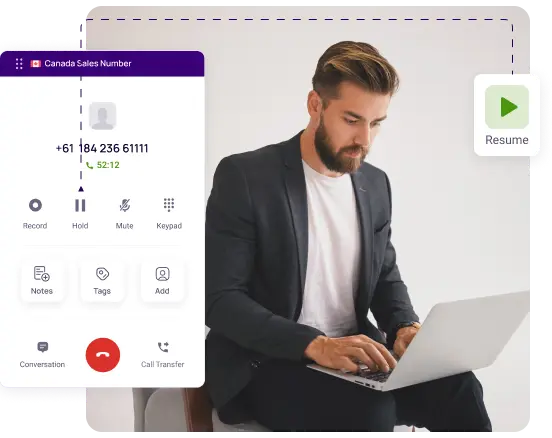

What does a call on hold mean?
A call on hold means temporarily pausing an ongoing phone conversation. The person who initiated the call typically puts it on hold to gain additional time. During this time, they can multitask, from checking information to handling other calls, without ending the current call. Callers on the other end usually hear background music, recorded messages, or moments of silence.
Putting a call on hold is useful for those people who deal with a high volume of calls in customer service or administrative roles. It helps them handle queries, fix issues, or attend to other callers quickly, making their work more organized.
How is a call put on hold?
A call is usually put on hold on telephony devices (hard phone and soft phone or cloud phone) using dedicated features designed for this function. The process depends on different devices and platforms, but it commonly involves pressing a hold button.
For landlines, a dedicated hold button is pressed to place the call on hold and resume it by pressing the same button again. On mobile phones, a hold button typically present on the call screen, is pressed. A message appears on the screen notifying your call is on hold. You can resume simply by pressing the hold button again. In VoIP systems, the hold button’s location varies by application.
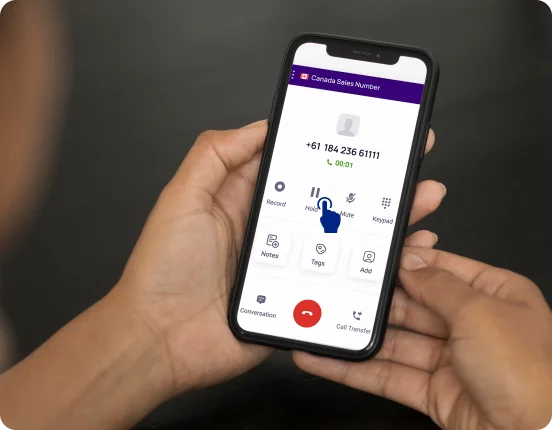
Benefits of putting Calls on Hold
The benefits of putting calls on hold are as follows:

Putting Business Phone Calls on Hold: The Do’s & Don’ts
Do’s
Don’ts
More Features like Call On Hold
Call Transfer
Route calls instantly to expert agents, minimizing customer wait time for swift query resolution and improved customer support.
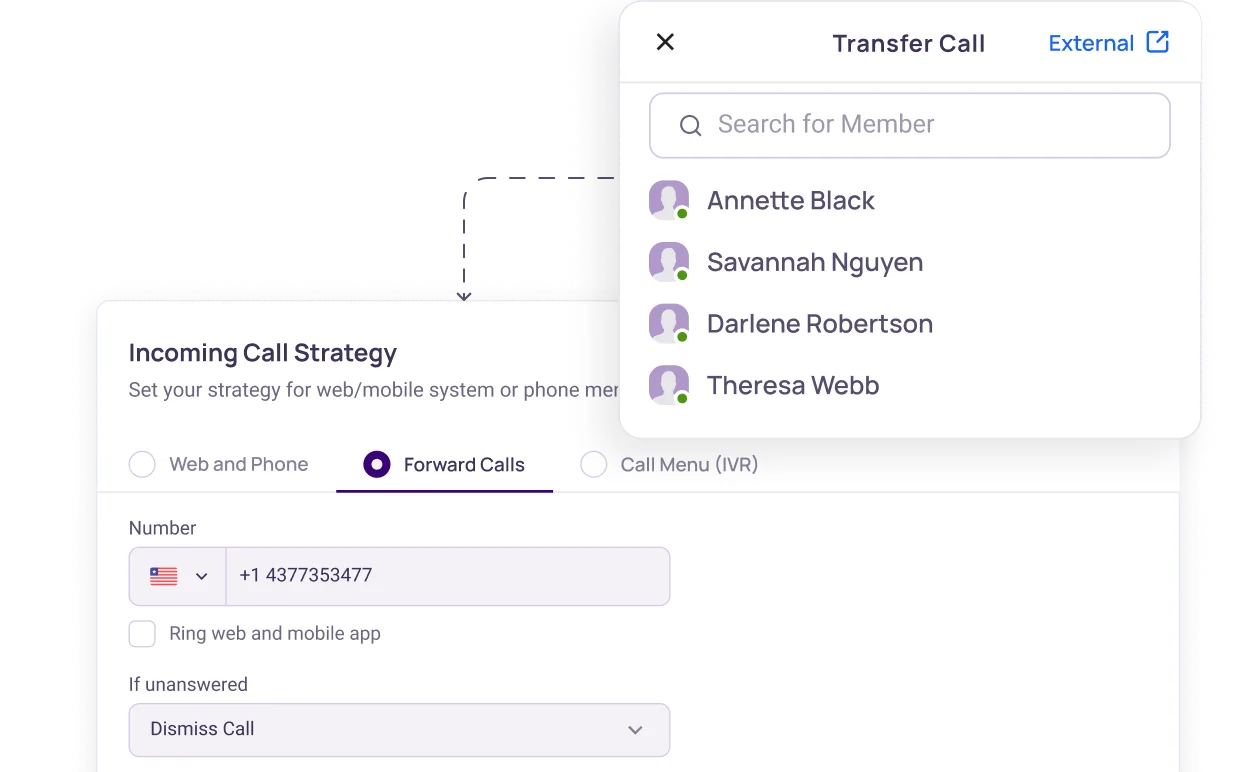
Call forwarding
Improve call management with call forwarding - never miss vital calls, boost agents’ productivity, and customer satisfaction.
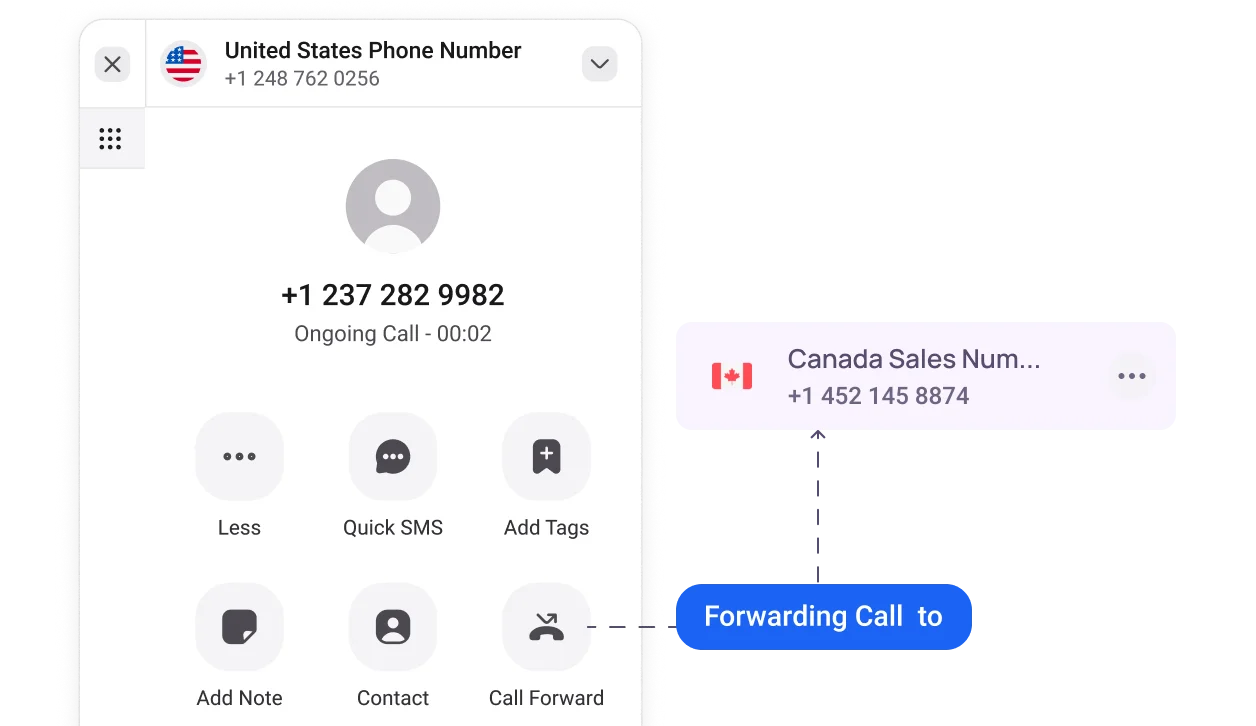
Call & Contact Tagging
Tag customers for easy sorting, streamlining navigation and enhancing customer support efficiency.
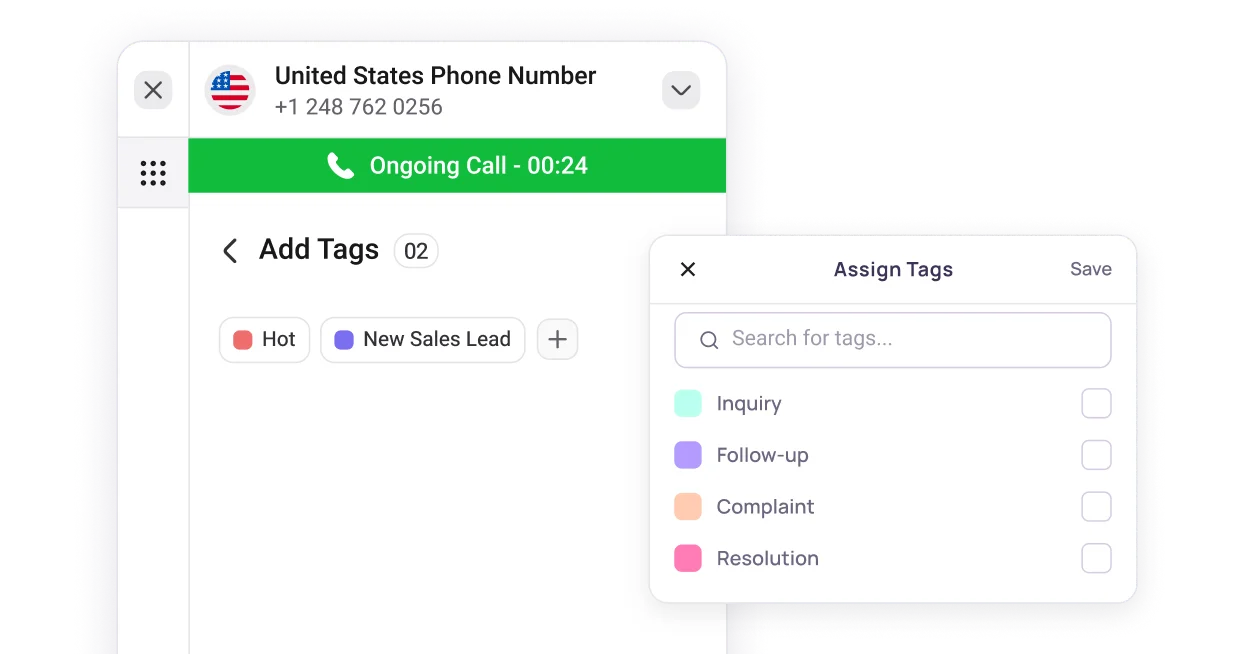
Frequently Asked Questions
Didn’t find the Answer you were looking for? Visit our Help Center or Contact Support
The Call-on-Hold feature allows users to temporarily pause an active call without disconnecting it. When a person puts a call on hold by pressing a “Hold” button on the phone, the audio transmission is paused, allowing the callers on the other side to hear music, personalized messages, or just silence. Many communication devices offer visual indicators, such as a pop-up message to both parties that their call is on hold. The duration of the hold depends solely on the initiator, and only they can resume the call by pressing the hold button again. Upon resuming, both parties can continue the conversation smoothly.
The differences between putting a call on hold and putting a call on mute are:
| Call on Hold | Call on Mute |
| Temporarily pauses communication on both sides. | Temporarily turn off the microphone on the device, which turns it on. |
| Callers are aware when they are kept on hold. | Callers are not aware when they are on mute. |
| Both parties cannot hear each other | The person who muted the call can hear but the other side cannot. |
| Call is put on hold to allow the initiator to perform other tasks. | Call mute is done to prevent background noises. |
Putting a call on hold on Android is quick and straightforward. Simply press the “Hold” button visible on the call screen. The caller on the other side will receive a voice message notifying them that their call is on hold. Once you are ready to re-interact, just press the hold button again.
The disadvantages of Putting Business Calls on Hold are:
- Placing business calls on hold might increase call dropout rates as many customers hang up their phones during holds, making you lose potential clients.
- Customers might lose interest in a product, or service if they have to wait for a long time, impacting business growth.
- Using the call-on-hold feature frequently interrupted the communication, making it an unproductive and time-wasting experience.
- Frequent use of call hold functions can lead to customer dissatisfaction, ultimately affecting the reputation of the business.
It is necessary to inform the caller while putting them on hold, as letting know them the exact reason will make them more patient and willing to wait. It also shows you are professional and respectful towards the caller’s time.
Calls can be on hold for a maximum of two minutes. If the hold time exceeds this limit, people are willing to hang up.
The Call-on-Hold feature allows users to temporarily pause an active call without disconnecting it. When a person puts a call on hold by pressing a “Hold” button on the phone, the audio transmission is paused, allowing the callers on the other side to hear music, personalized messages, or just silence. Many communication devices offer visual indicators, such as a pop-up message to both parties that their call is on hold. The duration of the hold depends solely on the initiator, and only they can resume the call by pressing the hold button again. Upon resuming, both parties can continue the conversation smoothly.
The disadvantages of Putting Business Calls on Hold are:
- Placing business calls on hold might increase call dropout rates as many customers hang up their phones during holds, making you lose potential clients.
- Customers might lose interest in a product, or service if they have to wait for a long time, impacting business growth.
- Using the call-on-hold feature frequently interrupted the communication, making it an unproductive and time-wasting experience.
- Frequent use of call hold functions can lead to customer dissatisfaction, ultimately affecting the reputation of the business.
The differences between putting a call on hold and putting a call on mute are:
| Call on Hold | Call on Mute |
| Temporarily pauses communication on both sides. | Temporarily turn off the microphone on the device, which turns it on. |
| Callers are aware when they are kept on hold. | Callers are not aware when they are on mute. |
| Both parties cannot hear each other | The person who muted the call can hear but the other side cannot. |
| Call is put on hold to allow the initiator to perform other tasks. | Call mute is done to prevent background noises. |
It is necessary to inform the caller while putting them on hold, as letting know them the exact reason will make them more patient and willing to wait. It also shows you are professional and respectful towards the caller’s time.
Putting a call on hold on Android is quick and straightforward. Simply press the “Hold” button visible on the call screen. The caller on the other side will receive a voice message notifying them that their call is on hold. Once you are ready to re-interact, just press the hold button again.
Calls can be on hold for a maximum of two minutes. If the hold time exceeds this limit, people are willing to hang up.
